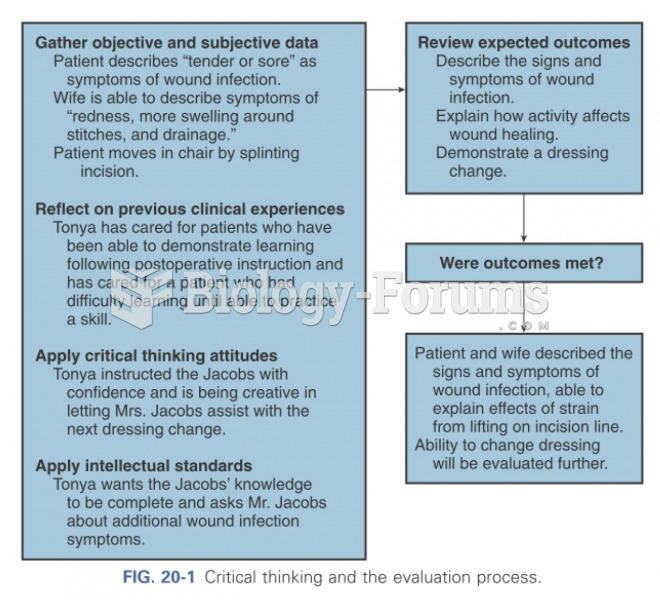|
|
|
Did you know?
There are more sensory neurons in the tongue than in any other part of the body.
Did you know?
The top five reasons that children stay home from school are as follows: colds, stomach flu (gastroenteritis), ear infection (otitis media), pink eye (conjunctivitis), and sore throat.
Did you know?
There are 60,000 miles of blood vessels in every adult human.
Did you know?
Multiple experimental evidences have confirmed that at the molecular level, cancer is caused by lesions in cellular DNA.
Did you know?
Drying your hands with a paper towel will reduce the bacterial count on your hands by 45–60%.







